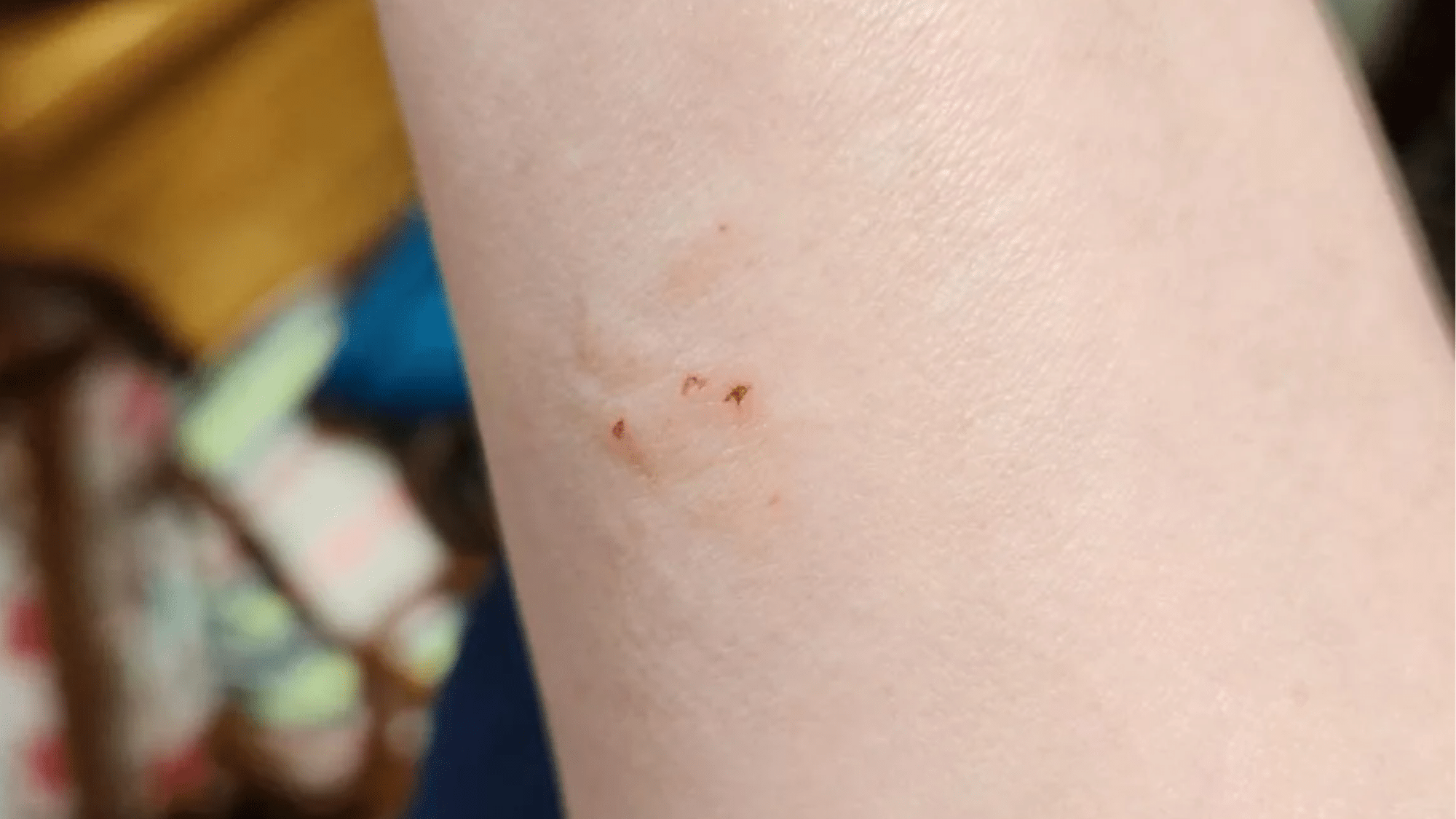Most of us rarely see bats up close, but sometimes these night flyers accidentally cross paths with humans.
When that happens, you might be left wondering if you’ve been bitten and what to look for.
Bat bites can be tricky to spot since they’re often tiny and painless, but knowing what they look like is really important for your health and safety.
Whether you found a bat in your house, had one fly too close, or just want to be prepared, here’s exactly what to watch for and what to do next.
What You Should Know About Bat Bites?
Getting bitten by a bat isn’t something most people worry about until it happens. But these bites have some unique features that make them different from other animal bites.
Bat teeth are incredibly small and sharp. This means their bites often look like tiny needle pricks rather than obvious wounds. Many people don’t feel them happening at all.
The biggest worry with bat bites isn’t pain or bleeding. It’s the small chance of rabies infection.
That’s why doctors always recommend getting checked out after any bat contact, even if you’re not sure you were actually bitten.
Appearance of a Bat Bite
Bat bites look different from other animal bites. Their teeth marks are tiny, often no bigger than a pinprick. You might see small red dots on your skin where the teeth punctured.
The bite area may show slight redness or minor swelling. Often, these marks fade quickly and can be hard to spot.
The pain from a bat bite feels mild, like a quick prick that goes away fast. Unlike larger animal bites, bat bites rarely tear the skin or cause bleeding.
This makes them tricky to identify without close inspection. Looking at the bite under bright light helps spot these subtle marks.
Health Risks Associated with Bat Bites
While bat bites might look tiny and harmless, they can carry some serious health risks that you definitely don’t want to ignore.
- Rabies is the Biggest Concern: This deadly virus affects your nervous system and becomes fatal once symptoms appear, but early treatment with rabies shots is highly effective.
- Bacterial Infections Can Develop: Without proper cleaning, bite wounds may become infected, showing signs like redness, warmth, pus, or fever.
- Histoplasmosis from Bat Droppings: This lung condition comes from breathing in spores from bat waste, not from bites themselves.
- Higher Risks for Weakened Immune Systems: People with compromised immunity face greater danger from all bat-related health issues.
- Immediate Medical Attention is Crucial: Seek help right away after any bat contact, even if you can’t see obvious bite marks.
The key takeaway? Don’t wait to see what happens after a bat encounter.
Quick medical care can prevent these health risks from becoming serious problems.
What to Do If You Suspect a Bat Bite?
Think you might have been bitten by a bat?
Here’s what to do right now:
First, wash the area with soap and water, then put on some antiseptic. Don’t wait around. Call your doctor or head to the emergency room immediately.
If the bat is still there, try to capture it safely using thick gloves or a container, but never touch it with your bare hands.
Even if you can’t see any bite marks, you still need medical help. This is especially important if you found a bat near someone who was sleeping or couldn’t tell you they were bitten, like a young child.
Preventing Bat Bites
The best way to avoid bat bites is simple: keep these flying mammals away from your living space and know how to act around them safely.
- Seal Up Your Home: Check for and close off tiny cracks, holes in attics, gaps around windows, and add chimney caps to block entry points.
- Make Your Property Less Appealing: Use outdoor lighting at night and inspect dark indoor spaces monthly since bats prefer darkness.
- Avoid Known Bat Hangouts: Stay away from caves, mines, and other places where bats commonly roost during outdoor activities.
- Dress Protectively During Peak Hours: Wear long sleeves when outside at dawn or dusk when bats are most active and likely to be flying around.
- Never Handle Bats Yourself: If you find one in your home, call wildlife removal experts who have proper training and equipment.
A little prevention goes a long way in keeping both you and the bats safe, so take these steps seriously to avoid any unwanted close encounters.
Pro Tip: For your safety, keep your home bat-free by sealing entry points and using proper lighting. When outdoors, stay away from bat habitats and wear protective clothing when needed.
Have you ever spotted a bat near your home?
Tell us about your experience in the comments below. And remember, if you suspect contact with a bat, don’t wait to see what happens.
Contact your doctor right away for proper care and peace of mind.






















